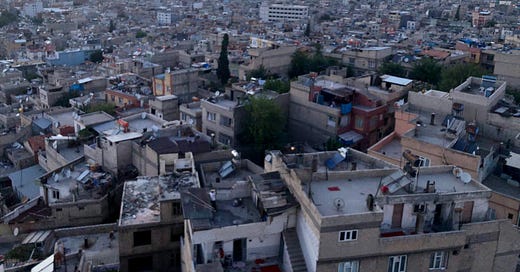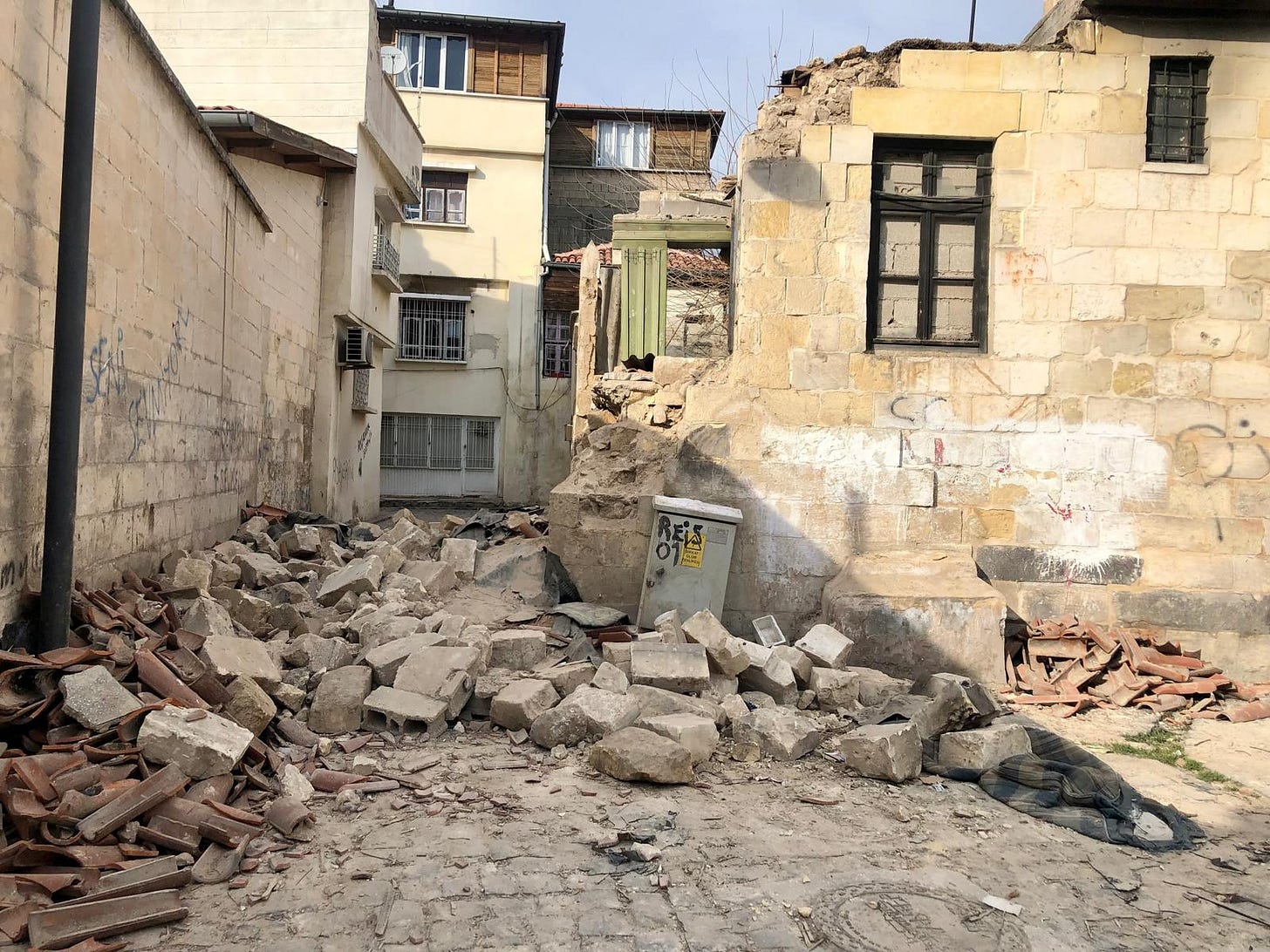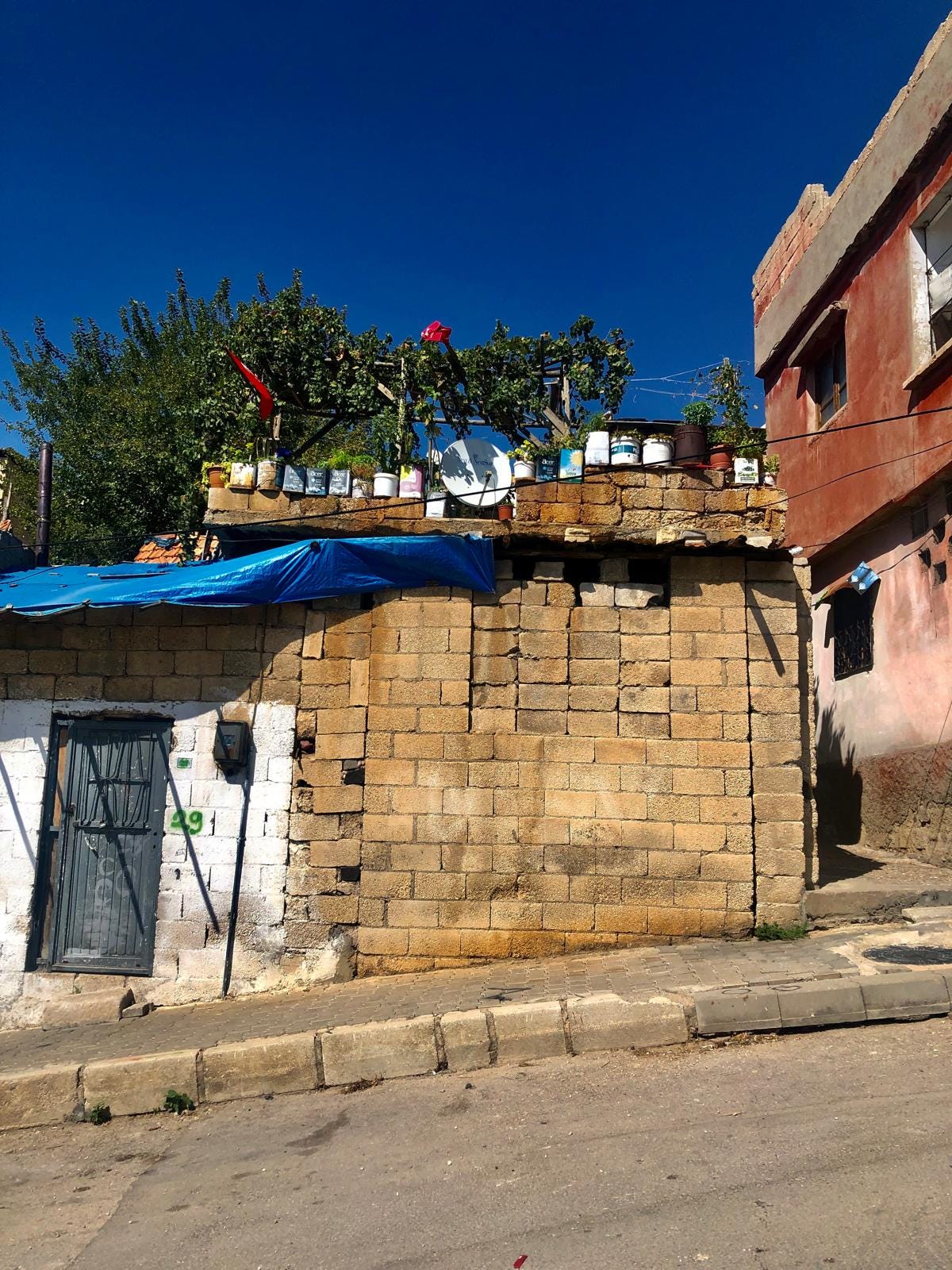A Year-and-a-Half After the Earthquake: Notes on Gaziantep
The southeastern city of Gaziantep has rebounded after the February 2023 earthquakes. A first-time visitor might not know the city was damaged, but the scars still remain, near and far.
It’s an unforgiving hot, dry September day in the southeastern city of Gaziantep, where a harsh sun pummels the earth, the sky cloudless to dim its glare. I’m in the heart of the old city, navigating familiar streets I’ve wandered through extensively over the course of half a dozen or so visits to Turkey’s culinary capital, a beautiful and fascinating place in its own right. Hulking above this maze of narrow alleyways and numerous elegant historic mosques and marketplaces--built with an exquisite combination of beige travertine limestone and ashen basalt—is the old fortress, which has been almost entirely restored. Much of the Roman-era castle crumbled to the ground during the earthquakes that struck the region in February of last year.
Gaziantep was among the cities that sustained significant damage in the the February 2023 earthquakes, the epicenter of which was in the neighboring province of Kahramanmaraş and affected thirteen provinces in south and southeastern Turkey. Some districts of Gaziantep province were laid to waste, but the city itself did not experience the fate that others such as Adıyaman and Antakya, the latter of which was leveled to the ground, left unrecognizable. One could even say the city was lucky, though in the historic center nearly every mosque was damaged to some degree, and most are covered in scaffolding and undergoing restoration to this day. Residential areas were left mostly unscathed, but there were buildings that collapsed entirely or were deemed unfit for residence. Traces of the quake were everywhere even though most streets in the newer parts of the city were unharmed.
I was there for the GastroAntep Festival, which has been held at the end of the summer every year since 2018, a week-long celebration of the city’s rich culinary culture. It was the first time I was back in Antep (as it is more commonly known by locals) since the immediate aftermath of the earthquake. Reporting from Antakya, Iskenderun, Adana and Mersin, Antep was the city I stayed in the longest at the time, for a number of reasons. It and Adana were the two primary hubs for reporters, due to the relative minimal damage and the prevalence of hotels. Staying in Antakya, Iskenderun, Adıyaman and Maraş was impossible unless you were willing to sleep in a cold bus station or in a car, which was always a possibility during those uncertain first few weeks. I ended up getting a gig photographing an EU aid plane that landed at the Antep airport from France, and I agreed to stay around for another week in the event that another plane would arrive. Either way, I was getting paid, so I ended up walking the streets of Antep during the day, reporting on food relief efforts that were centered in the city but involved crucial distribution throughout the region, extending into the areas of northern Syria that were affected.
There were hundreds, if not thousands, of people staying in tents at the time, some of them at the park adjacent to my hotel near Atatürk Avenue, a main street in the newer part of the city center. One evening, I was in my room and felt the building slightly shake as if a sudden gust of wind had struck it. I stuck my arm out the window, no breeze whatsoever, just one of the countless aftershocks that kept residents in the region on edge for weeks to come. On the evening of February 20th that year, another earthquake struck the already-ravished districts of Defne and Samandağ in the province of Hatay, and like its deadlier predecessors from two weeks prior, they were felt throughout the region. When that quake hit, I didn’t feel it. I was walking briskly up the hill in a crowded, lower-income neighborhood in the northern part of the city, and while I didn’t feel the tremors, I knew exactly what had happened as everyone burst out of their shops and ground-floor homes onto the street all at once. There could be no other explanation. For ten minutes or so there was chaos, babies cried, mothers looked helpless, internet and phone reception was spotty at best.
Antep is split by train tracks and a major highway that happens to coincide with the city’s section of the ancient Silk Road. To the southwest of the tracks are some of the most modern and wealthy neighborhoods, to the southeast lies the elaborate, arresting old city, its castle, and proud collection of golden-hued historic treasures. Much of the area north of the tracks is called Karşıyaka (the other side), which is confusingly home to the city’s most popular destination (the Zeugma Mosaics Museum), and its most iconic kebab restaurant (Halil Usta) as well as the city’s most notoriously rough neighborhoods. A huge part of this area situated immediately above the tracks was previously demolished in an urban renewal effort, replaced with a series of dozens of sterile high-rise apartments that look exactly the same.
Just a stones-throw away is the Hacı Baba neighborhood, known to many as the most dangerous in Antep. That was where I was walking when the earthquake on February 20, 2023 took place, and everyone bolted out the door onto the street in panic. It is also the place where a hotel chain recently opened a glittering 17-floor location that ominously towers over the ramshackle homes of the densely-packed quarters below. This is where I’m staying for the GastroAntep Festival, the first time I’ve been invited by the city since 2020, when the pandemic was in full swing and the festival was held online. Only journalists were allowed to attend the events in person, which involved a harvesting of pistachios, the city’s most important gift from the ground.

On an upper floor, my window gazes out at Hacıbaba and the greater horizon of northern Antep. In the evening, flocks of pigeons zoom low in the sky in what appear to be choreographed patterns, before landing on their rooftops and returning to their cages. Antep is among the cities in southeastern Turkey where raising pigeons is a huge part of cultural life for working-class men. They dote over their birds lovingly and train them vigorously. During my four-day stay, I make sure to be in my room before sunset so I can watch the birds and their owners interact in the watermelon pink sky.
On my second day, I met a friend and gastronomy expert who claimed to know Antep’s best spot for baklava and şöbiyet, a truly high honor for the city, which produces the country’s best. We took a cab from the old city to Atatürk Boulevard, and suddenly I’m transported back to February 2023. We passed by my hotel that shook in the aftershock, the park where people stayed in tents during impossibly cold nights, the city’s most iconic restaurant Bayazhan, which lost nearly an entire wall in the earthquake. It was clear that it had been patched up due to the pristine white stone blocks that contrasted with the aged beige.
While reporting from the earthquake zone, there were moments in every day where I was on the verge of bursting in tears, but I never did. I didn’t allow myself to do so, because I was there to report and breaking down was not an option. Also, what right did I have to succumb to whatever emotions I was going through when I was able to sleep in a warm hotel every night while so many people had lost their homes in the heart of winter? While walking with my friend down that familiar avenue a year and a half later, I once again was on the verge of sobbing, but held it in. We had what indeed was incredible baklava and şöbiyet, and then went to another spot for a cup of coffee. She left to give a talk at one of the festival’s panels, and I set on foot in the opposite direction, passing by more familiar streets upon which I had wandered purposefully or aimlessly over the course of a week in February of last year. I passed by the mall where I bought my first-ever power bank, something which immediately seemed necessary to have when reporting in such conditions. For some reason, while on that busy avenue, I couldn’t hold it in anymore. Tears streamed down my face, but it was hot and sunny and I had to keep going. I continued walking for awhile and then hopped into a cab back to the hotel, traversing the busy highway that flanked Antep’s train tracks and separated the city. It was just before sunset, and my eyes were dry. The pigeons—black, white, speckled, turquoise and majestic—were making their rounds, adhering to the same pattern of flight, mystic, consistent and calming. The sky faded from pink to orange, navy to black. The pigeons returned to their cages for the night, their owners retreated from the rooftops. The next morning the sun rose with a fury, once again without a cloud in sight to interrupt its triumphant entrance. The city shone beneath its rays, basked in the hot, dry and eventually cool conclusion of late summer, glimmering inside its own shadow.








Teşekkür ederim!
Beautifully written travelogue of the city.